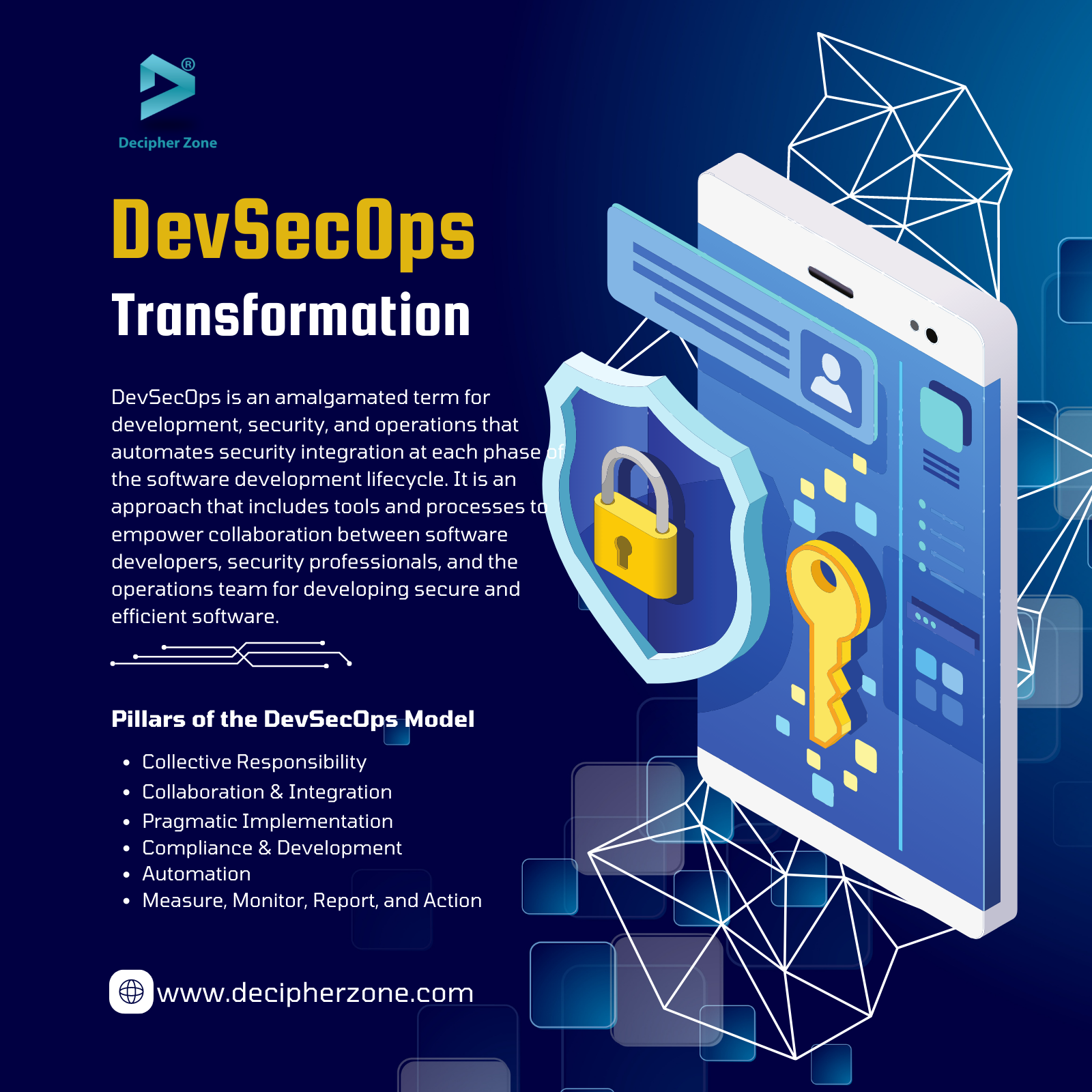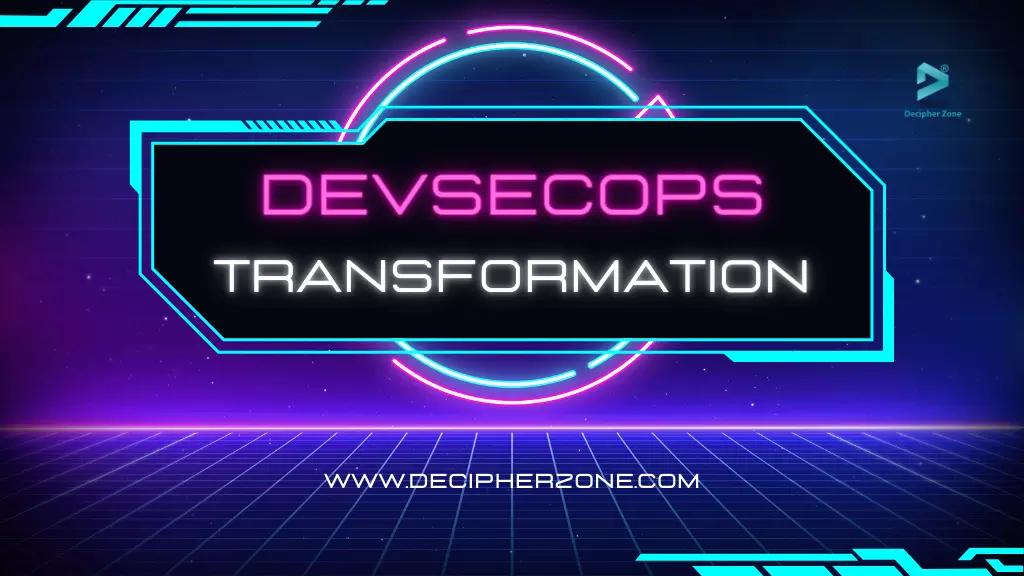How to Execute a Smooth DevSecOps Transformation? With the rise of digital transformation, it has become crucial for businesses to develop efficient software and applications to achieve their goals while providing customer value.
The importance of security in software development has never been denied but is often overlooked or simply cast aside.
However, with customers, enterprises, and employees trusting software apps with their confidential data, it will be bothersome if security is not considered from the initial development stage.
Yet, when businesses are implementing DevOps to improve the software development lifecycle, they tend to forget the security process. So, in this blog, we will cover everything about moving from DevOps to DevSecOps for better security.
What is DevSecOps?
DevSecOps is an amalgamated term for development, security, and operations that automates security integration at each phase of the software development lifecycle. It is an approach that includes tools and processes to empower collaboration between software developers, security professionals, and the operations team for developing secure and efficient software.
Read: DevOps Engineers
By implementing DevSecOps, development teams can address software security issues. It can also be considered an alternative to older security measures that could no longer keep abreast with rapid development and strict timelines.
Read: DevOps Engineer Roadmap
Also, DevSecOps assists in integrating app and software security into DevOps and Agile processes seamlessly. It handles security issues as they arise, making it less expensive, easier, and faster to fix.
Read: DevOps and Software Architecture
Benefits of DevSecOps
There are numerous benefits that come with DevSecOps, some of which are as follows:
-
Improved Security
-
Catch Software Vulnerabilities
-
Ensure Regulatory Compliance
-
Reduced Time to Market
-
Develop New Features Securely
Improved Security
As DevSecOps introduces cybersecurity from the initial stage of the software development cycle, the code gets continuously scanned, reviewed, audited, and tested for security vulnerabilities and bugs.
These security issues are then addressed and fixed before additional dependencies get included. Overall, DevSecOps practices not only help fix vulnerabilities but also free up security specialists, allowing them to focus on other meaningful tasks.
Catch Software Vulnerabilities
With DevSecOps, software developers can focus on security controls throughout the development as the security checks are conducted at each phase rather than waiting for the software to be completed. It allows software developers to catch vulnerabilities at earlier stages leading to reduced fixing time and cost.
Ensure Regulatory Compliance
By adopting professional security technologies and practices while working with DevSecOps, software developers can easily ensure regulatory compliance of the software application.
Reduced Time to Market
When software is developed without using a DevSecOps environment, the chances of leading to security problems that delay production are higher as fixing these issues can be expensive and time-consuming. On the other hand, implementing DevSecOps minimizes the need to repeat a process to identify and fix the problem, and cuts out unnecessary builds and duplicate code, saving a lot of time and costs.
Develop New Features Securely
With DevSecOps comes the flexibility of collaboration between developers, security professionals, and the operational team. Therefore, the understanding of tools to automate assessment and reporting for software security becomes common. This allows every team member to focus on how to create and add new features securely to add more customer value.
Read: Best Practices & Tools for DevOps Testing Strategy

Challenges that Comes with DevSecOps
Just like other technologies, DevSecOps has its fair share of challenges in implementation as well. A few common challenges you might encounter are:
-
Compatibility Issues
-
Cloud Complexity
-
Balancing Speed & Security
-
Tool Sprawl & Alert Fatigue
Compatibility Issues
Typically a DevOps team uses a wide set of open-source tools consisting of libraries, codes, frameworks, and templates to boost productivity. However, these tools are more likely to introduce a variety of security problems if not used or audited properly.
Cloud Complexity
If your business is using multiple clouds and heavily relies on automation, it can become a challenge to keep them secured.
Balancing Speed & Security
If you are using legacy security processes and tools that are not up to the securing challenges instead of creating an adaptable, agile, and fast security foundation, you are more likely to negatively impact the software deployment and development.
Tool Sprawl & Alert Fatigue
With continuously expanding cloud security services implemented in the software, security specialists get flooded with high volumes of security alerts, making it difficult to prioritize and focus on the important fixes.
Read: What does DevOps actually do
Pillars of the DevSecOps Model
The DevSecOps model relies on three major pillars for enhanced security and success of the application. These are:
-
Collective Responsibilities
-
Collaboration & Integration
-
Pragmatic Implementation
-
Compliance & Development
-
Automation
-
Measure, Monitor, Report, and Action
Collective Responsibilities
To successfully embed DevSecOps in the software development process, the mindset of every member of the organization must be on the same page. Although the Cloud Security Officer is going to play a leadership role in DevSecOps integration, it will be each person’s collective responsibility to be aware of their contribution to the security stance of the organization.
Collaboration & Integration
Another thing to keep in mind is that security can only be achieved successfully through collaboration among development, security, and operations. All functional teams must have a security-aware and collaborative culture for reporting potential abnormalities.
Pragmatic Implementation
Each software has a different development lifecycle in terms of structure, process, and completion. Therefore, there are no one-size-fits-all DevSecOps tools that can be implemented. However, organizations can always go for the Digital Security and Privacy model to ensure privacy, safety, and trust pragmatically.
Compliance & Development
It isn’t easy to bridge the gap between compliance and development. However, it can be achieved by identifying applicable controls, converting them into software security measures, and automating these controls within inflection points in the development lifecycle, enhancing risk mitigation quality and compliance.
Automation
Automated security practices are the foundation of gaining efficiency in development processes. It also helps in enhancing the software quality by optimizing testing timeliness, thoroughness, and frequency.
Measure, Monitor, Report, and Action
Successfully integrating DevSecOps in software development can take time depending on the project's complexity and scope. So, it is crucial to set key metrics to measure, monitor, report, and take corrective actions promptly to succeed.
Read: Deploying Faster with Salesforce DevOps
Wrapping It Up
DevSecOps transformation is an ongoing process and it is gonna take a little bit of time to get hold of it. Therefore, it is not something that you will be able to accomplish overnight. So, make sure to strategize before moving forward.
So, that was all about DevSecOps transformation and we hope that the blog has shed some light on what to expect when it comes to making the transformation smooth.
If you are someone looking for a DevSecOps team to build, test, deploy, and maintain your software development project securely, then all you need to do is get in touch with our experts now! We will understand your business requirements, give you a budget-friendly development quote, and guide you throughout the software development life cycle.
FAQs: DevSecOps Transformation
What are the pillars of a DevSecOps model?
Collective Responsibilities, Collaboration and integration, Pragmatic Implementation, Compliance and Development, Automation, and Monitoring, Reporting, and Action are the major pillars of a DevSecOps model.
What is DevSecOps?
DevSecOps is an amalgamated term for development, security, and operations that automates security integration at each phase of the software development lifecycle.
What is the difference between DevOps and DevSecOps?
DevOps aims to improve the quality and speed of software development and delivery, while DevSecOps focuses on integrating security practices throughout the development lifecycle.

